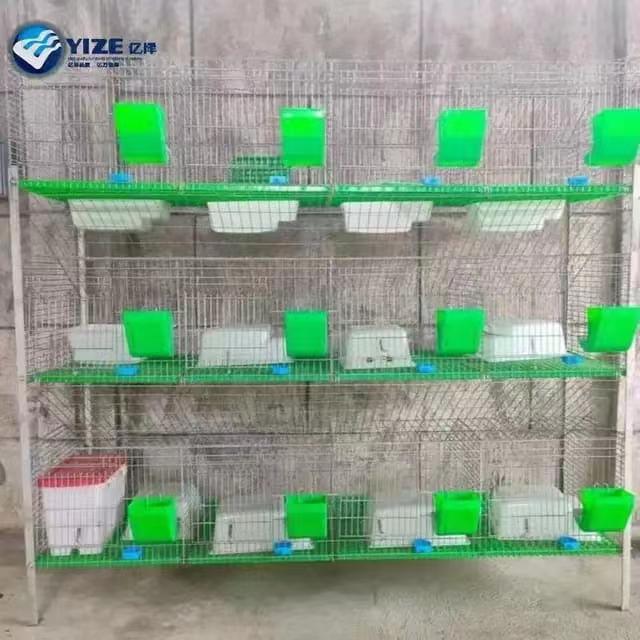Fish Feed Production Equipment for Sustainable Aquaculture Solutions
ធ្នូ . 14, 2024 19:43 Back to list
Fish Feed Production Equipment for Sustainable Aquaculture Solutions
The Significance of Fish Feed Making Machines in Aquaculture
In the modern age of aquaculture, the importance of high-quality fish feed cannot be overstated. With the increasing global demand for seafood, fish farmers are constantly seeking ways to enhance productivity and sustainability. This is where fish feed making machines come into play, serving as indispensable tools in the production of nutritious, cost-effective fish feed.
Understanding Fish Feed Making Machines
Fish feed making machines are sophisticated equipment designed to produce pellets or extruded feed from various raw materials. These machines process ingredients such as fish meal, soybean meal, corn, and vitamins through grinding, mixing, and extrusion, ultimately creating a balanced diet for fish species. The primary types of fish feed machines include extruders, pelletizers, and mixing units, each contributing uniquely to the formulation of high-quality feed.
Benefits of Using Fish Feed Making Machines
1. Customization and Control One of the primary advantages of using fish feed making machines is the ability to customize feed formulas according to specific fish species’ nutritional needs. Different fish have varying dietary requirements, and using these machines allows farmers to adjust the composition of the feed, enhancing growth rates and health outcomes.
2. Cost-Effectiveness By producing their own feed, fish farmers can significantly reduce costs associated with purchasing commercial feed. This is particularly beneficial for large-scale operations where price differences can make a substantial impact on overall profitability. Additionally, with the ability to select raw materials, farmers can optimize feed production based on local availability and prices.
3. Quality Assurance Fish feed making machines enable better quality control throughout the production process. Farmers can monitor the raw materials going into the feed, ensuring that everything is fresh and free from harmful additives. This not only promotes better health for the fish but also results in higher quality seafood for consumers.
4. Sustainability The aquaculture industry faces challenges regarding sustainability, especially with the depletion of wild fish stocks used in feed production. By producing their own feed, fish farmers can use alternative protein sources, such as insect meal or plant-based proteins, promoting a more sustainable aquaculture practice.
fish feed making machine

The Process of Fish Feed Production
The typical process of fish feed production using a fish feed making machine involves several key stages
1. Ingredient Preparation Raw materials are selected and prepared, which may include grinding and mixing different ingredients to achieve the desired nutrient composition.
2. Extrusion The mixture is then fed into an extruder, where it is subjected to high temperature and pressure. This process cooks the ingredients, gelatinizes the starches, and shapes the feed into pellets. The extrusion process also helps in reducing pathogens, contributing to the overall health of the fish.
3. Cooling and Drying Once extruded, the pellets need to be cooled and dried to reduce moisture content and ensure shelf stability. This step is crucial as high moisture levels can lead to spoilage and reduce the feed’s shelf life.
4. Packaging Finally, the fish feed is packaged for storage or direct distribution to fish farms. Proper packaging helps maintain the quality and freshness of the feed until it reaches the end-user.
Conclusion
Fish feed making machines are revolutionizing the aquaculture industry by providing fish farmers with the tools necessary to produce high-quality, customized feed efficiently. As sustainability and cost-effectiveness become ever more critical in food production, these machines offer a viable solution to meet the growing demands of the global seafood market. By investing in fish feed production technology, aquaculture businesses can enhance their productivity, maintain high standards, and contribute to the sustainable growth of the industry.
-
High Performance Exhaust Fan – Efficient Ventilation Solutions for Home
NewsJun.10,2025
-
High-Quality Gestation Pen for Sows Durable Mobile Pig Pen & Simple Pig Pen Solutions
NewsJun.10,2025
-
High Quality Rabbit Cage Double Tier Designs & Welded Wire Mesh Supplier
NewsJun.10,2025
-
Floating Fish Feed Machine - High Efficiency Floating Fish Feed Extruder for Small Scale Production
NewsJun.10,2025
-
Premium Poultry Housing Solutions Mobile & Commercial Free Range Options
NewsJun.10,2025
-
Industrial FRP Fans Corrosion-Resistant Blades & Centrifugal Systems
NewsJun.09,2025






